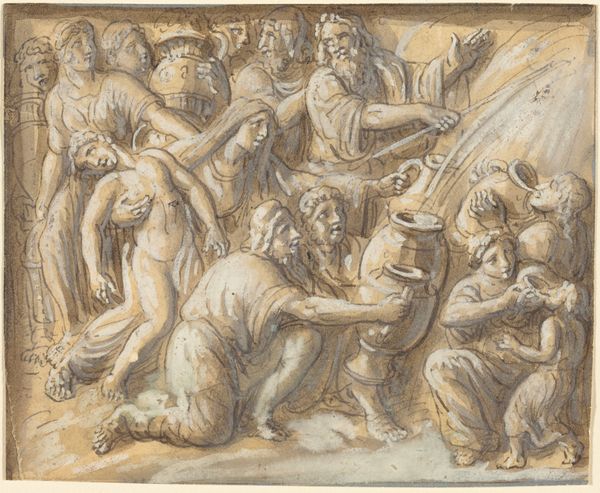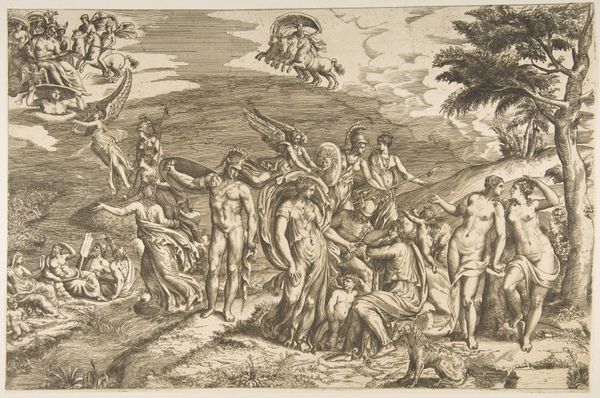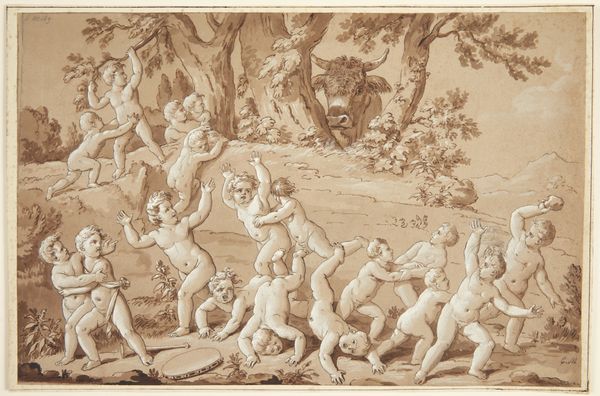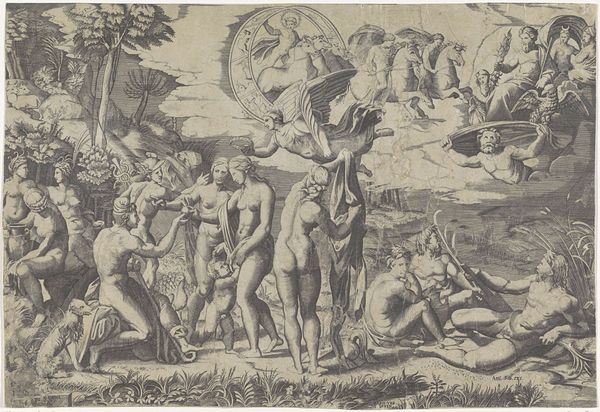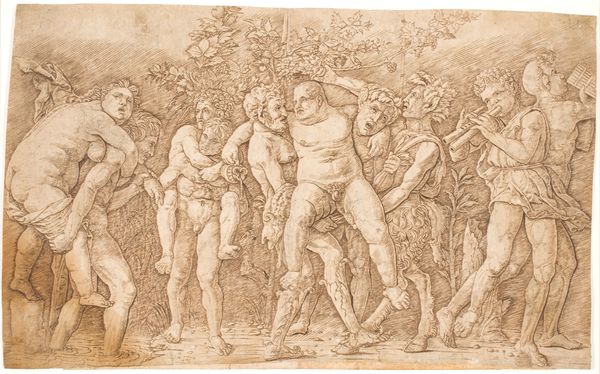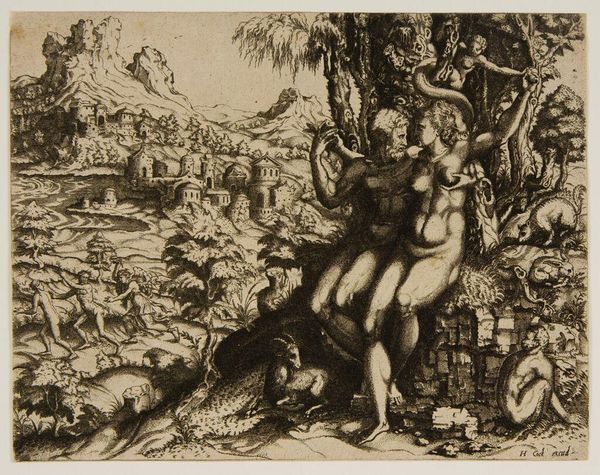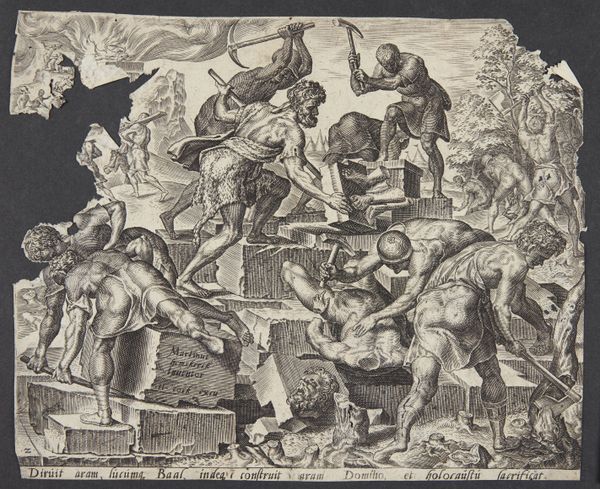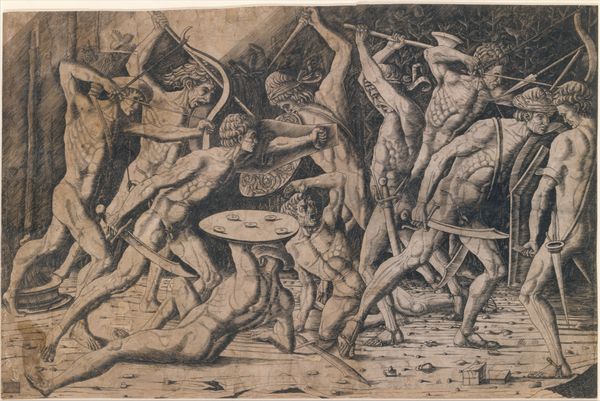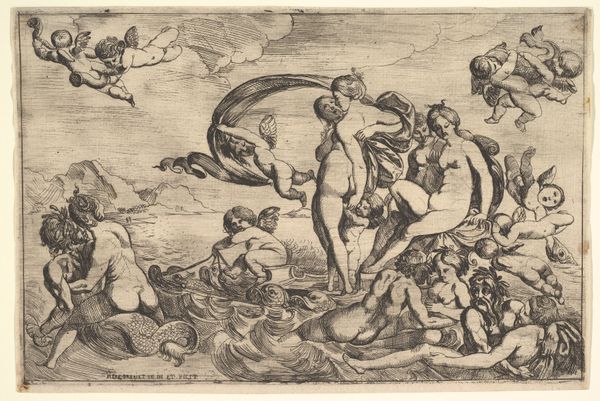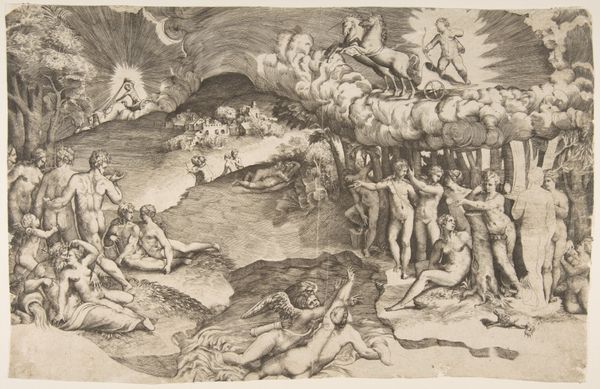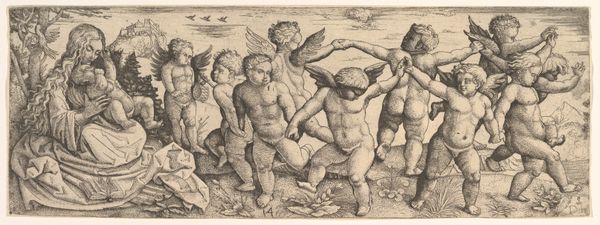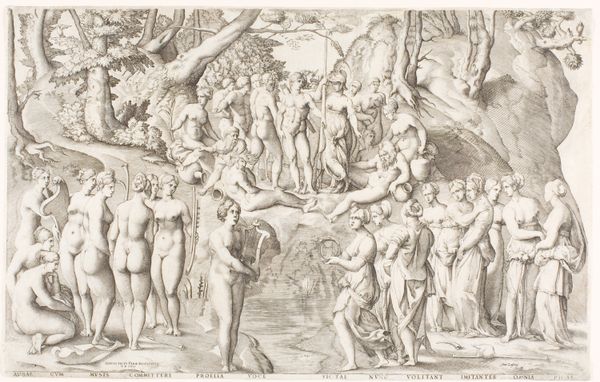
#
abstract painting
#
possibly oil pastel
#
oil painting
#
fluid art
#
acrylic on canvas
#
underpainting
#
mythology
#
painting painterly
#
watercolour bleed
#
watercolour illustration
#
watercolor
Copyright: Public domain
Editor: Here we have Piero di Cosimo’s "The Discovery of Honey by Bacchus" from around 1505. It’s brimming with figures! It’s a bit overwhelming at first glance… such a frenetic energy. What stands out to you in this painting? Curator: Indeed! The symbols of Bacchus, and particularly his connection to natural abundance, speak volumes here. Notice the tree at the center. It’s not just a tree, it's a nexus, a symbol of transformation and nourishment. How does it strike you? Does it remind you of any specific cultural motifs? Editor: It reminds me of a maypole, actually! Celebrating nature… So the honey must be more than just food, then? Curator: Precisely. Honey, in many cultures, represents wisdom, eloquence, and even immortality. Its discovery by Bacchus is a symbolic moment, an infusion of divine sweetness into the world. Think of bees as divine messengers. Are there other figures you find intriguing? Editor: I'm drawn to the satyrs – especially the one with the honeycomb on the lower right. He seems contemplative. Curator: An excellent observation! The satyr is a liminal figure, part human, part animal, existing between worlds. His contemplation underscores the transformative power of Bacchus. These hybrid figures act as constant reminders of our own dual natures – rationality versus instinct. What feelings does this contrast evoke in you? Editor: It's powerful, the idea of embracing both sides. I guess I always associated Bacchus with just revelry. Curator: Revelry is a superficial aspect. The core message is transformation through intoxication and nature's gifts. Do you find that shifts your understanding of the piece? Editor: Absolutely! It gives the painting more depth, it's not just a party scene but an exploration of the human condition. Curator: It shows us how carefully chosen symbols transmit lasting ideas about who we are and the world around us. Editor: I’ll definitely look at classical art differently now. Thank you!
Comments
No comments
Be the first to comment and join the conversation on the ultimate creative platform.
